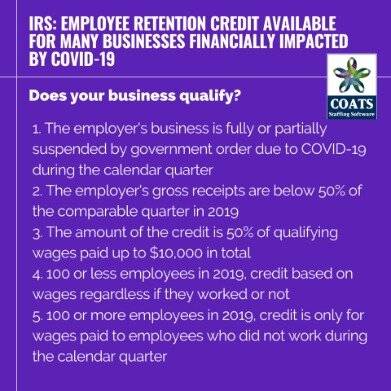
Many people use pay stubs to verity their income for a house, apartment, car, or loan. Some company usually imposes its own set of pay stub abbreviations to make it easier for employees to understand. Part time employees are usually employed on a permanent basis or on a fixed term contract. They work a fixed number of hours (less than 38 hours per week). Full time employees are usually employed on a permanent basis or on a fixed term contract. Compassionate Leave is taken when a member of an employee’s immediate family or household passes away or is critically ill.
Taxable wages are the earnings from which an employer must withhold taxes. The definition of taxable wages depends on the tax you’re talking about. For example, taxable wages for federal income tax withholding isn’t the same as taxable wages for FICA taxes. An essential part of the process is holding a portion of each employee’s earnings and making tax payments on their behalf.
QuickBooks Payroll
Employees may edit their addresses and submit updated income tax withholdings forms through the portal. Unlike payroll taxes, employers never contribute to paying their employees’ federal or state income taxes. Retroactive pay can apply to both hourly wages and overtime earnings.

Gross pay is stated as an annual amount for salaried employees. The annual salary is divided by the number of pay periods in the year to determine gross pay for a pay period. Social Security (OASDI) – Social Security is both an employee withholding tax coronavirus relief package and an employer payroll tax. The employer is responsible for remitting a total of 12.4% of an employee’s taxable earnings to the IRS. They are permitted to take 6.2% from the employee as a withholding tax and “match” the other 6.2% as a payroll tax.
An annual period during which employees can make updates to their health insurance and benefits enrollments. A timesheet documents the number of hours an employee worked within a pay period. Businesses may use paper timesheets, time clock software, or an ESS portal to track how much an employee worked. If the company pays in arrears, the paycheck will be for the workweek that ended seven days before. If the company does not pay in arrears, then the paychecks will be for the current workweek, even though it hasn’t yet ended. Shift differentials are additional compensation for irregular shifts.
Tax Resources
The form asks for details such as the employee’s marital status, number of dependents, and additional income. The employer then uses Form W-4 to calculate how much of an employee’s salary is withheld for tax purposes. These types of payments are taxable, so you must separate them out when you’re doing payroll accounting and include them in the employee’s taxable wages for the year. Most deductions don’t affect the amount of an employee’s taxable income, but some are considered pre-tax. These are subtracted from the employee’s gross income to reduce their taxable income. Examples are retirement plan contributions and some health care costs.
Many companies choose to outsource their payroll accounting to outside business accountants. As such, there is a big opportunity to get into the business of offering payroll outsourcing to companies in your area. To get going as quickly and successfully as possible, you may want to invest in a payroll accounting franchise such as Padgett Franchises. By becoming a franchisee you get the necessary training and community to help you in your business as well as instant name recognition.
Global Payroll
The Office of the Fair Work Ombudsman is an independent statutory agency created by the Fair Work Act 2009 (FW Act). The Fair Work Ombudsman (FWO) is supported by staff who assist with the performance of workplace compliance and advisory functions set out in the Fair Work Act. A person is a casual employee if they accept an offer for a job from an employer knowing that there is no firm advance commitment to ongoing work with an agreed pattern of work. Accrued Leave is the amount of leave an employee currently has available to them at a given point in time.
- If you are either registered for GST or withhold taxes from an employees wage, then you will need to submit and remit payment of your Business Activity Statement (BAS).
- They are deductions that are taken out from your income before the tax is calculated.
- Net pay – One way to think of this is that it’s the employee’s take-home pay.
- Throughout the year, the information from that W-4 form will inform the taxes that the business withholds on behalf of that employee.
- For example, taxable wages for federal income tax withholding isn’t the same as taxable wages for FICA taxes.
Payroll is the process of paying the company’s employees after calculating their due amount. Processing payroll involves the employees’ names, wages, hours worked, deductions, benefits, and taxes. Some of the terms that are used in this process are as follows. A pay period is the time frame of work for which you’re paying an employee. If you pay every other Friday, the pay period could be from the prior two weeks, with the last day being on the Friday that’s also payday.
Gross pay
This tax is then used to fund such programs as Social Security and Medicare. The amount an employee pays in payroll taxes over the course of his or her career may be indirectly related to the level of benefits for which he or she is eligible. A separate record must be kept for each employee with the amounts paid for each pay period. This information is used for end-of-year reports, including W-2 forms that are sent to employees.
An employment termination payment (ETP) is a lump sum payment received as a result of employee’s termination of employment. Within each industry award are a series of classifications according to skill level and/or qualifications which are applied to each employee. If you are a new business owner, you may come across specific payroll terms that you should understand.
Garnishments are most common for employees who have failed to pay their debts (such as student loans) and for child support payments. Form 1099NEC refers to a set of tax forms used to report income outside of traditional employee wages. This form is most often used by freelancers and independent contractors. Unlike the Form W-2, Form 1099NEC does not require a company to withhold taxes or other deductions. The record of all the calculations for all employees is called a payroll register.
